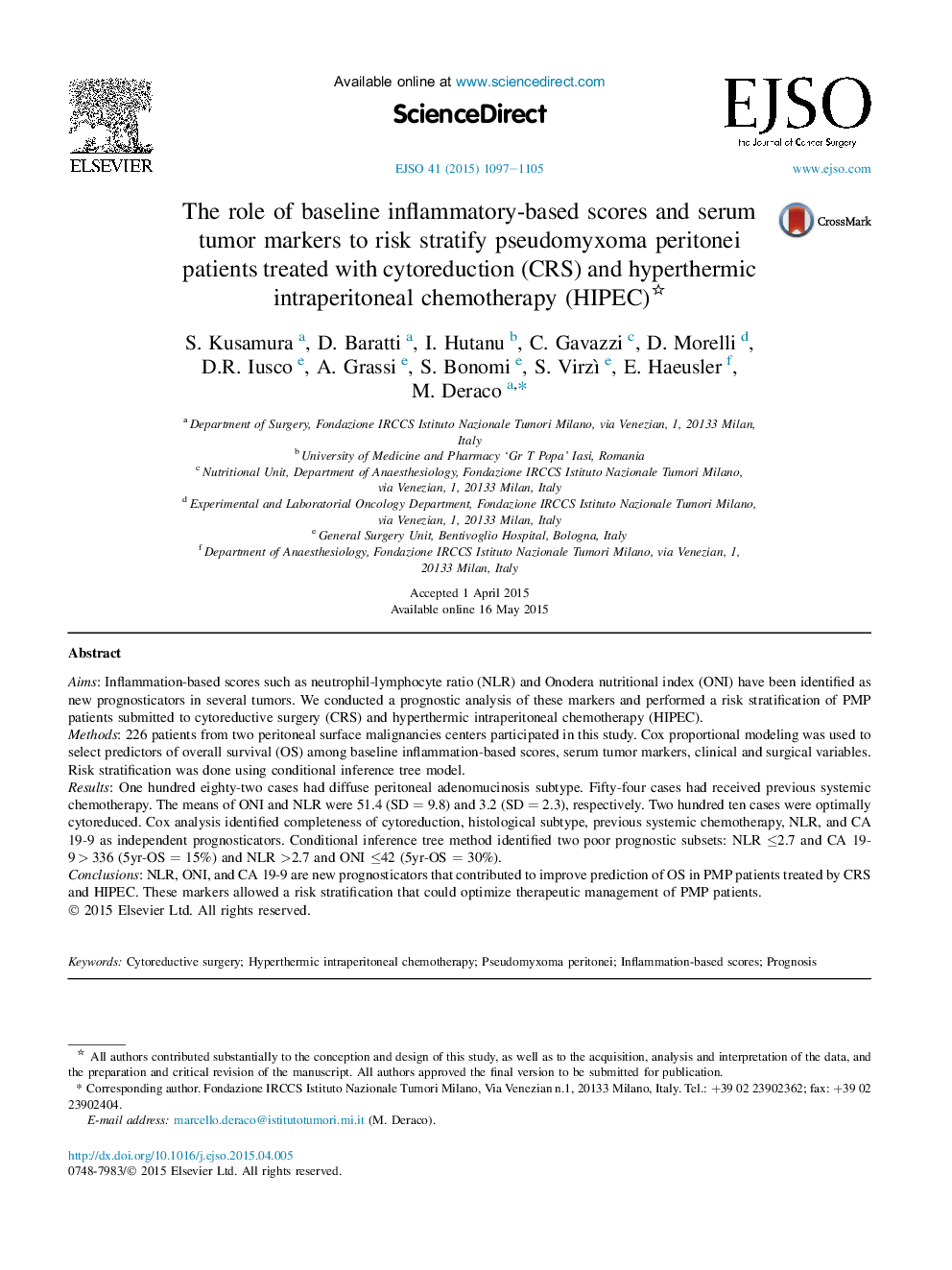| Article ID | Journal | Published Year | Pages | File Type |
|---|---|---|---|---|
| 3984628 | European Journal of Surgical Oncology (EJSO) | 2015 | 9 Pages |
AimsInflammation-based scores such as neutrophil-lymphocyte ratio (NLR) and Onodera nutritional index (ONI) have been identified as new prognosticators in several tumors. We conducted a prognostic analysis of these markers and performed a risk stratification of PMP patients submitted to cytoreductive surgery (CRS) and hyperthermic intraperitoneal chemotherapy (HIPEC).Methods226 patients from two peritoneal surface malignancies centers participated in this study. Cox proportional modeling was used to select predictors of overall survival (OS) among baseline inflammation-based scores, serum tumor markers, clinical and surgical variables. Risk stratification was done using conditional inference tree model.ResultsOne hundred eighty-two cases had diffuse peritoneal adenomucinosis subtype. Fifty-four cases had received previous systemic chemotherapy. The means of ONI and NLR were 51.4 (SD = 9.8) and 3.2 (SD = 2.3), respectively. Two hundred ten cases were optimally cytoreduced. Cox analysis identified completeness of cytoreduction, histological subtype, previous systemic chemotherapy, NLR, and CA 19-9 as independent prognosticators. Conditional inference tree method identified two poor prognostic subsets: NLR ≤2.7 and CA 19-9 > 336 (5yr-OS = 15%) and NLR >2.7 and ONI ≤42 (5yr-OS = 30%).ConclusionsNLR, ONI, and CA 19-9 are new prognosticators that contributed to improve prediction of OS in PMP patients treated by CRS and HIPEC. These markers allowed a risk stratification that could optimize therapeutic management of PMP patients.
